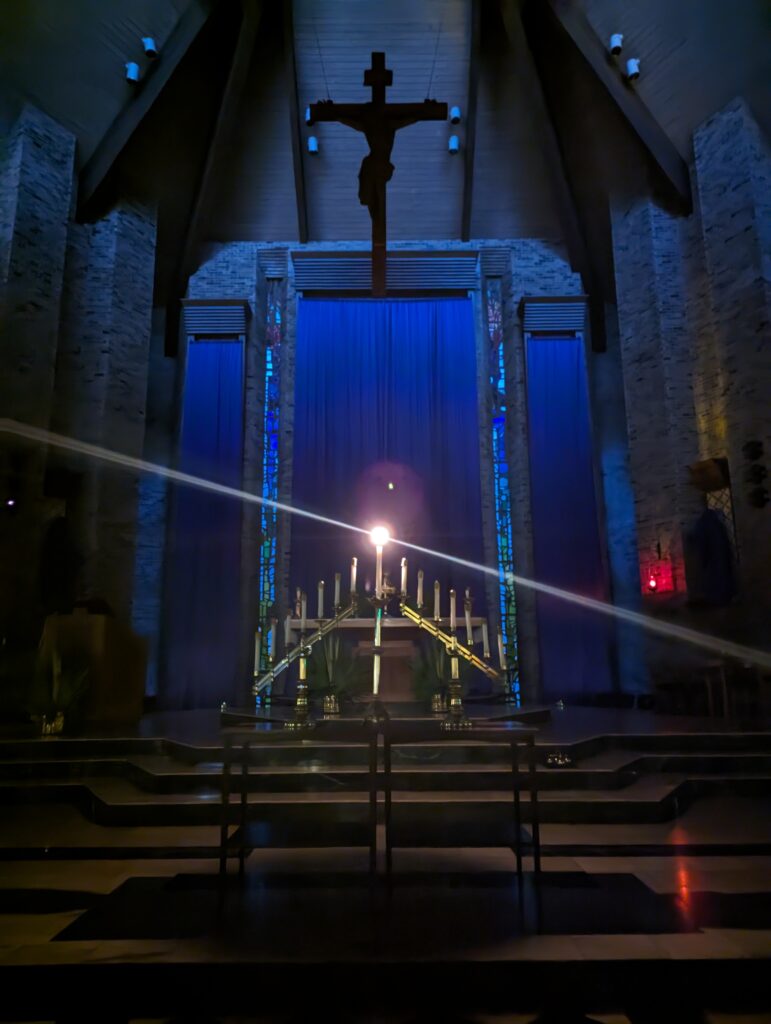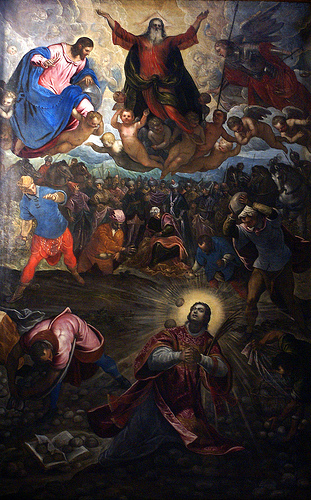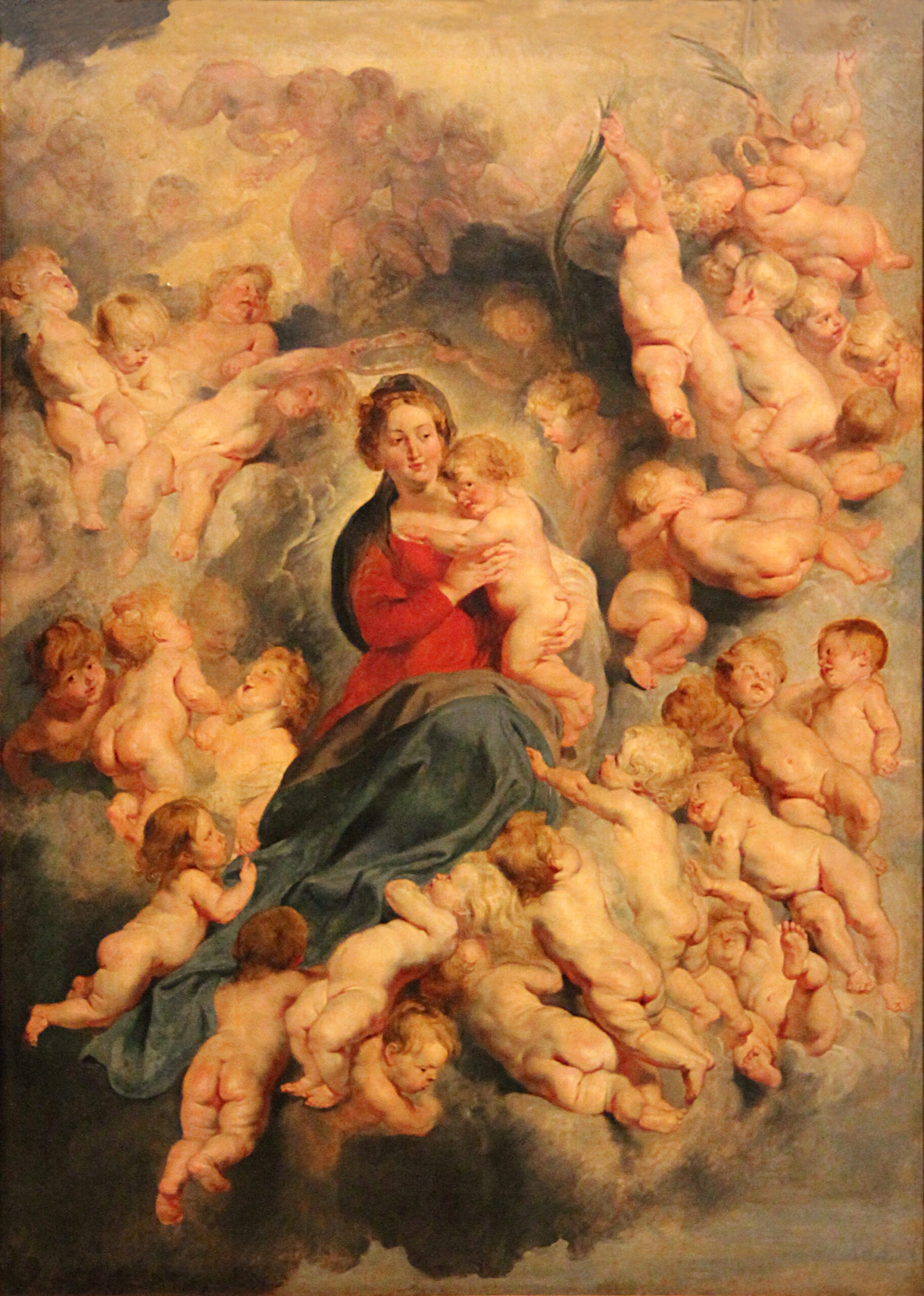As part of preparing to enter into the Triduum, we gathered tonight at Saint Mark parish for Tenebrae or the Service of Shadows. Over the course of an hour and a half, we chanted fifteen psalms – split into groups of three called nocturnes – with readings from the Lamentations of the prophet Jeremiah, the writings of Saint Augustine, and Paul’s letter to the Hebrews between each nocturne.
As each psalm concluded, an altar server extinguished one of the fifteen candles set before the altar. Though the church was lit from without and within when we started, the shadows deepened as the service drew on and twilight fell.
At the conclusion of the Canticle of Zechariah, the fifteenth and final candle was removed from the sanctuary. Standing together in the darkness, the Christus Factus Est was chanted and the Our Father prayed. In the silence that followed, a loud noise – the strepitus 1– rang out in the church, signifying the closing of the tomb of Christ. The lone candle was returned to the front of the sanctuary and by its light, we left the darkened church.
I was introduced to Tenebrae in 2015, when my friend Thom Ryng (along with some interested parishioners) introduced me to the tradition. A sort of liturgical portmanteau of Matins & Lauds (Office of Readings and Morning Prayer, respectively), this used to be a staple of the Triduum – offered on Spy Wednesday, Holy Thursday, and Good Friday. With the liturgical reforms of Vatican II, Tenebrae fell out of practice – though it has been experiencing a resurgence in many parishes.
Personally, Tenebrae is one of my favorite para-liturgical celebrations of Holy Week. As a pastor, I have been rather blown away by how well received it has been by parishioners – I would never have guessed that a mid-week hour-plus service of chanted psalms would inflame the hearts of so many! And yet, perhaps I shouldn’t be surprised: who among us doesn’t long for a mystical experience of the Lord’s work among us?! Happily, this is not the last but rather the first of such opportunities to enter into the mysteries of Christ’s saving work.
May we continue together in prayer as we contemplate the passion, death, and resurrection of the Lord.
- The strepitus, it should be noted, is produced at Saint Mark by an altar server slamming the sacristy door (a solid-core wooden door framed in steel) shut hard. This role is much-sought-after among the servers – and they relish the gasps of those caught off-guard at the noise! Though I was not among those gasping, close observers may have caught sight of the priest flinching ever-so-slightly ¯\_(ツ)_/¯ ↩︎



